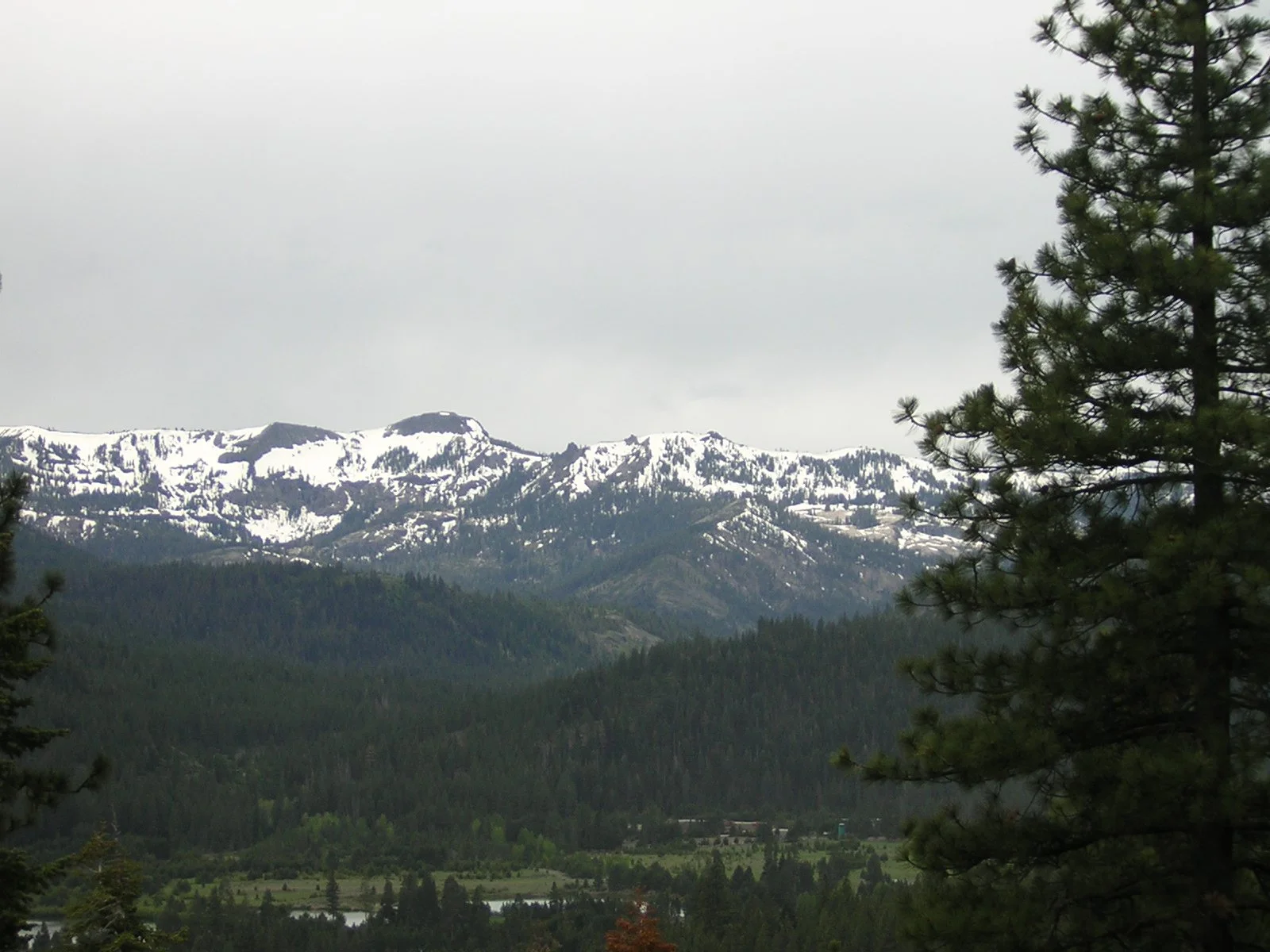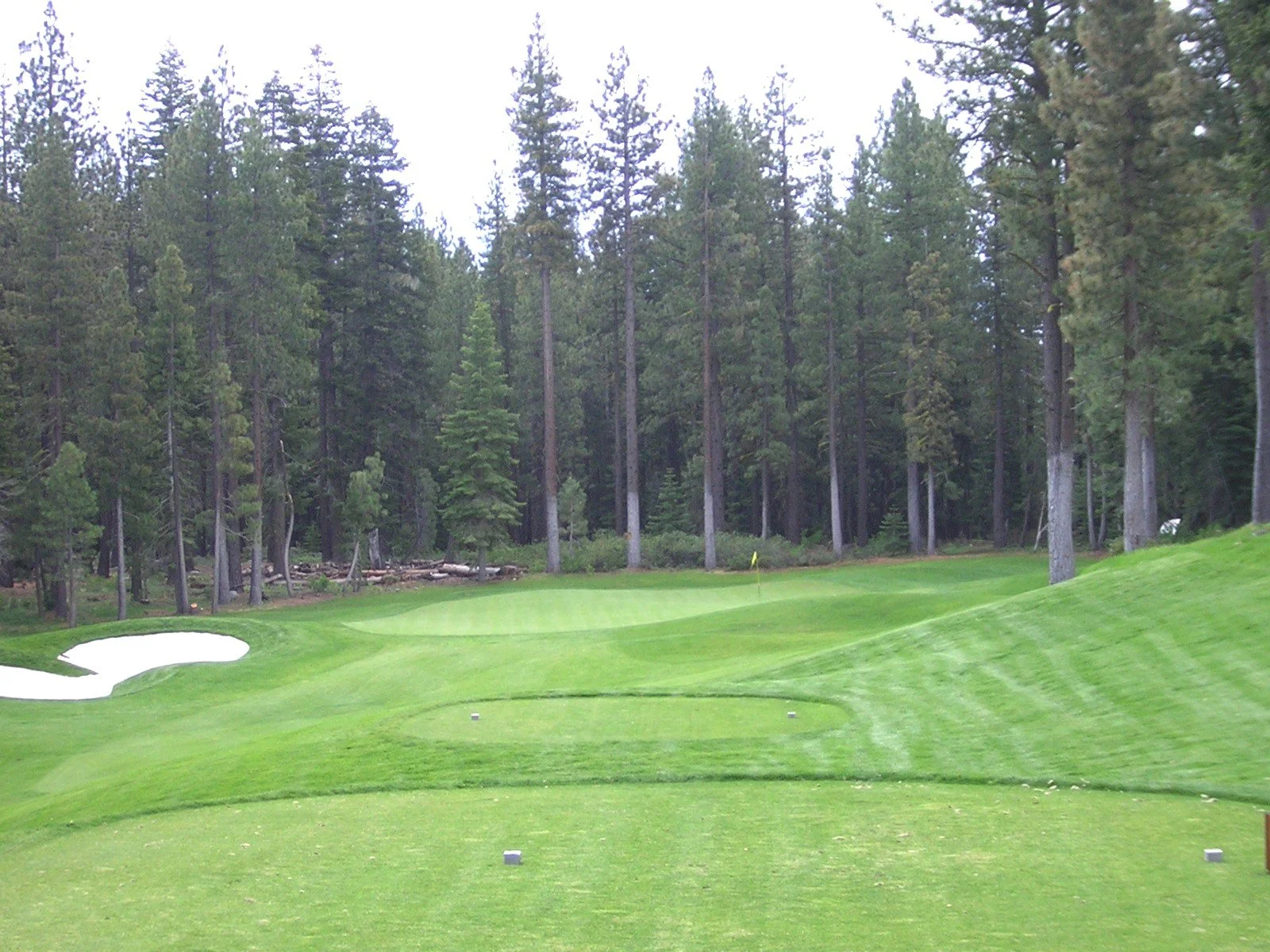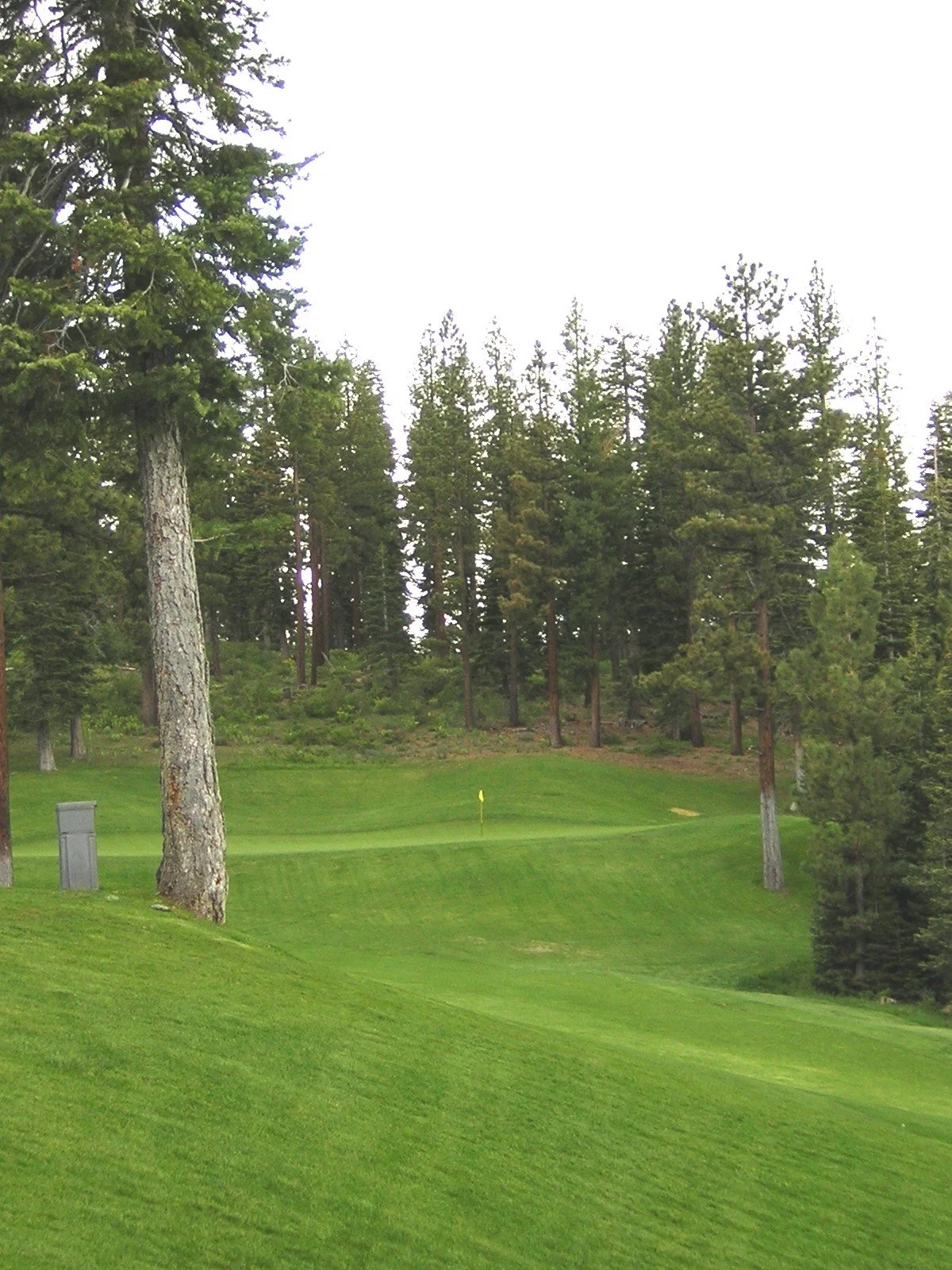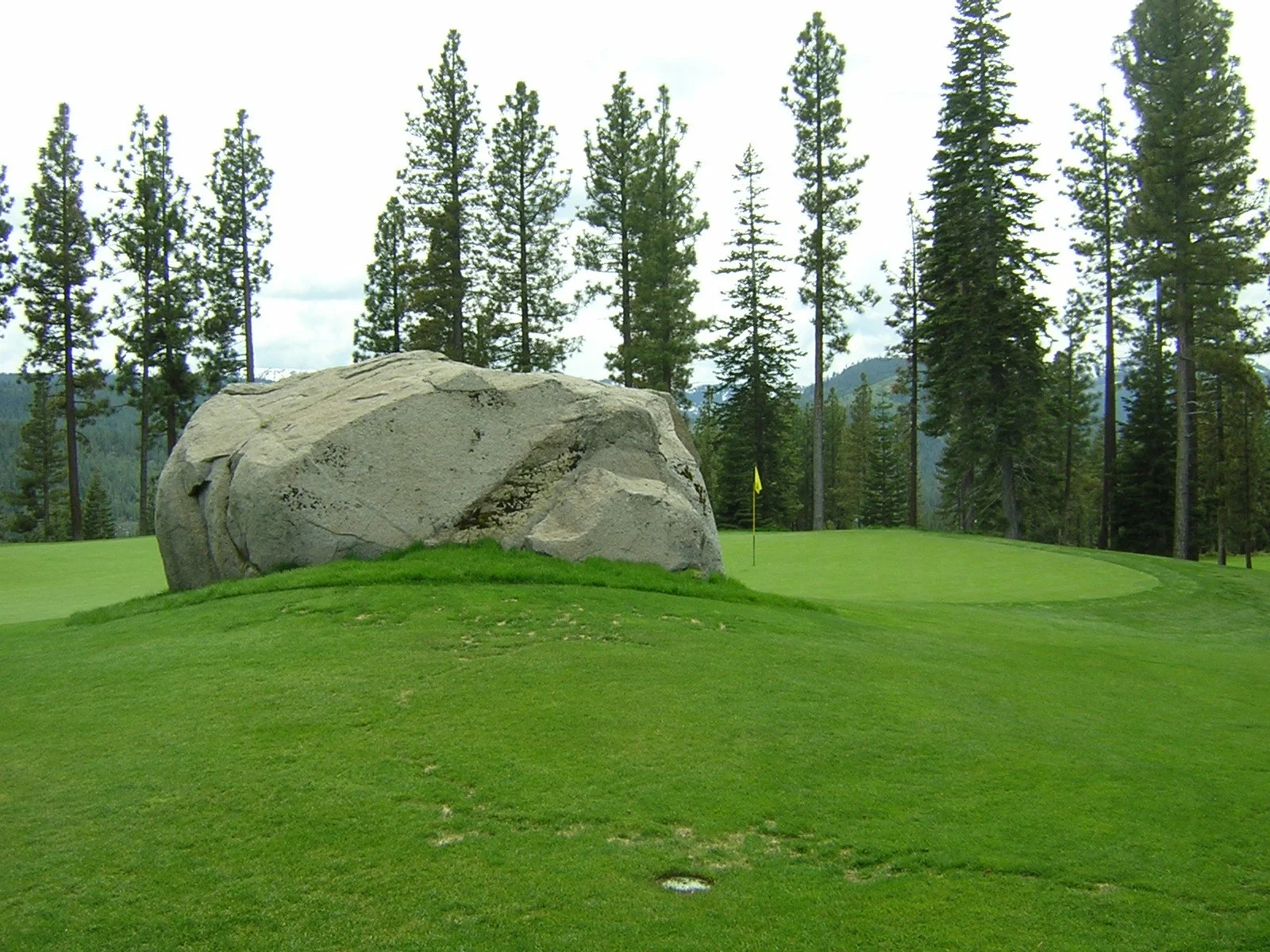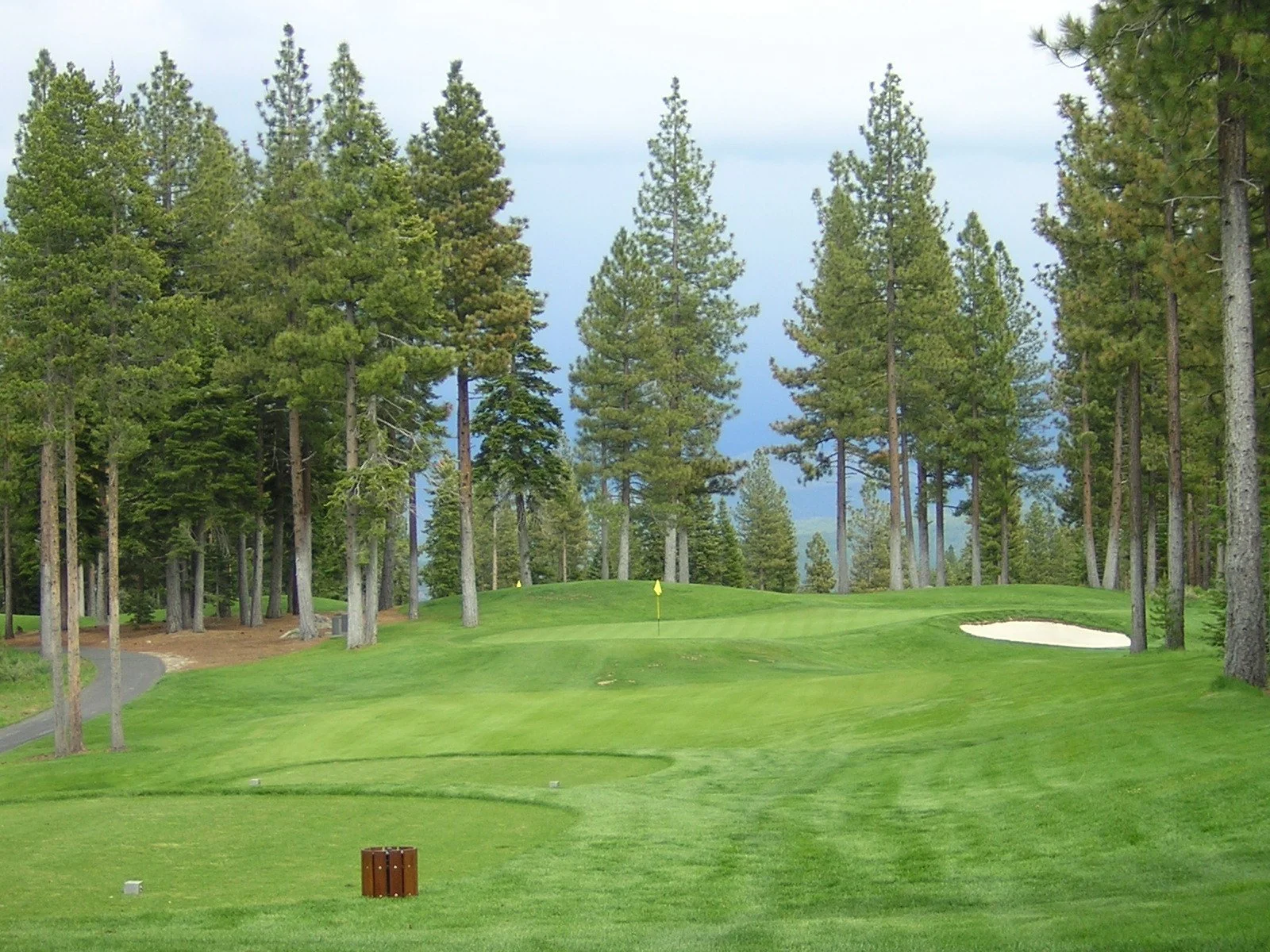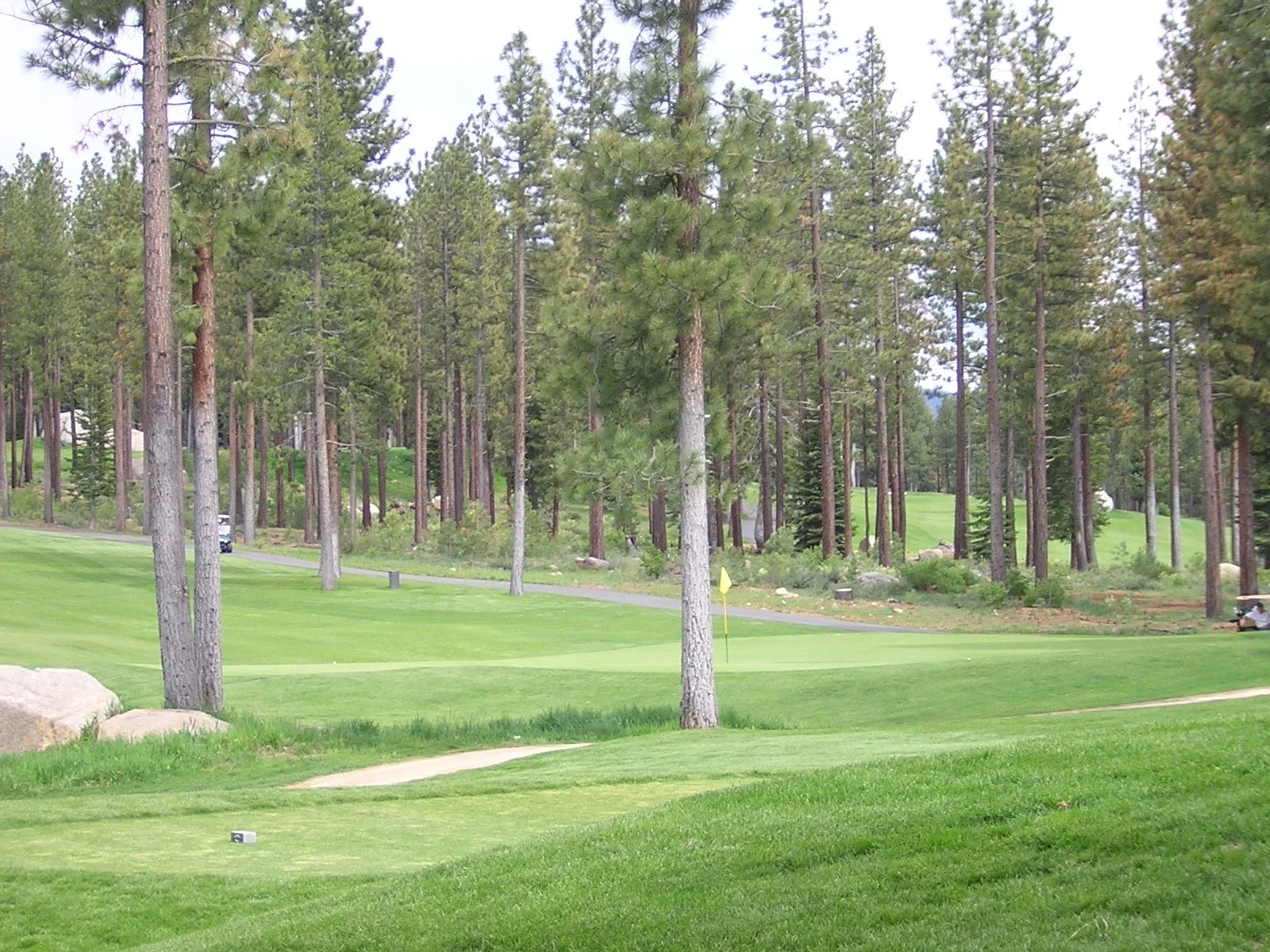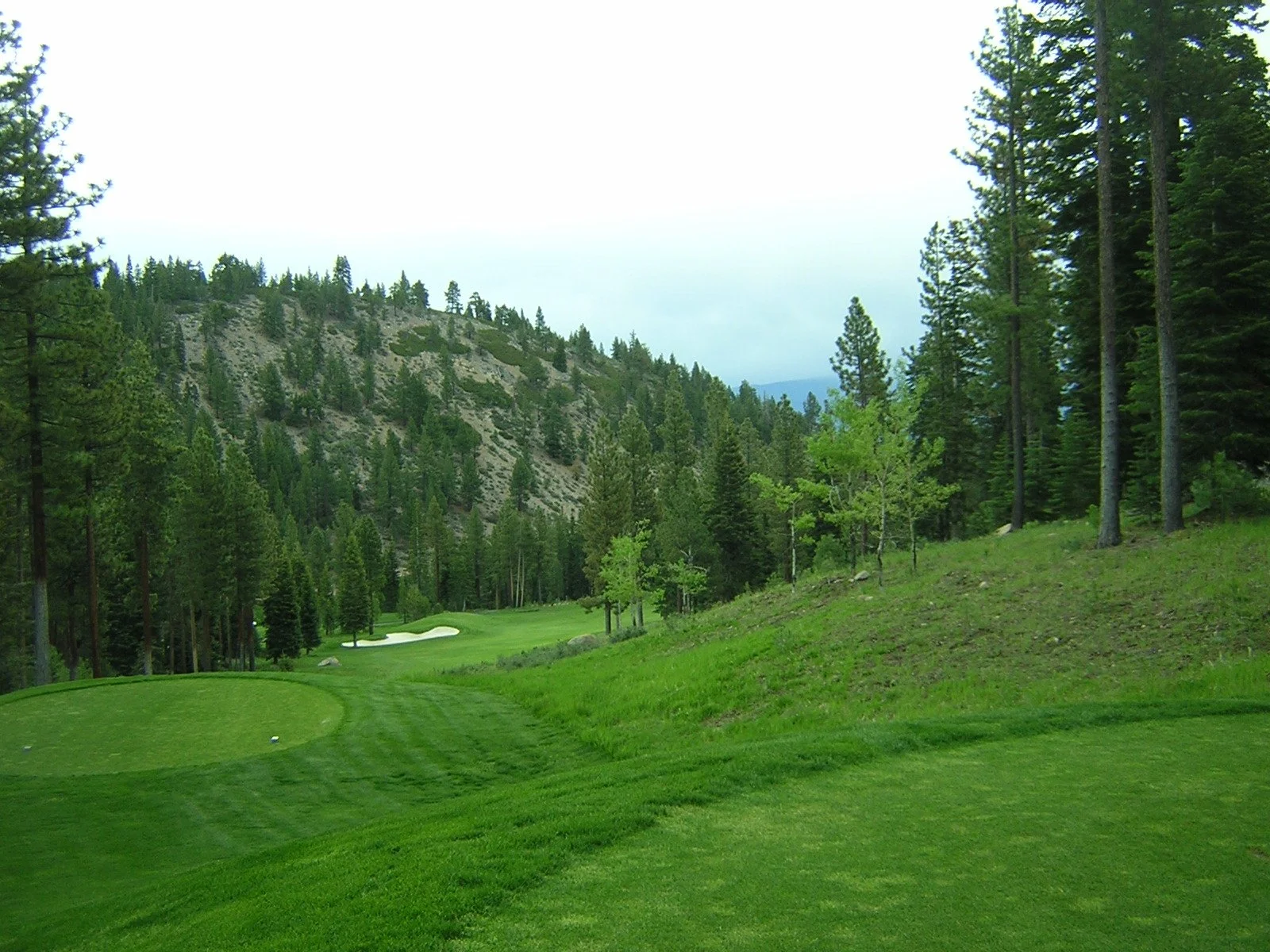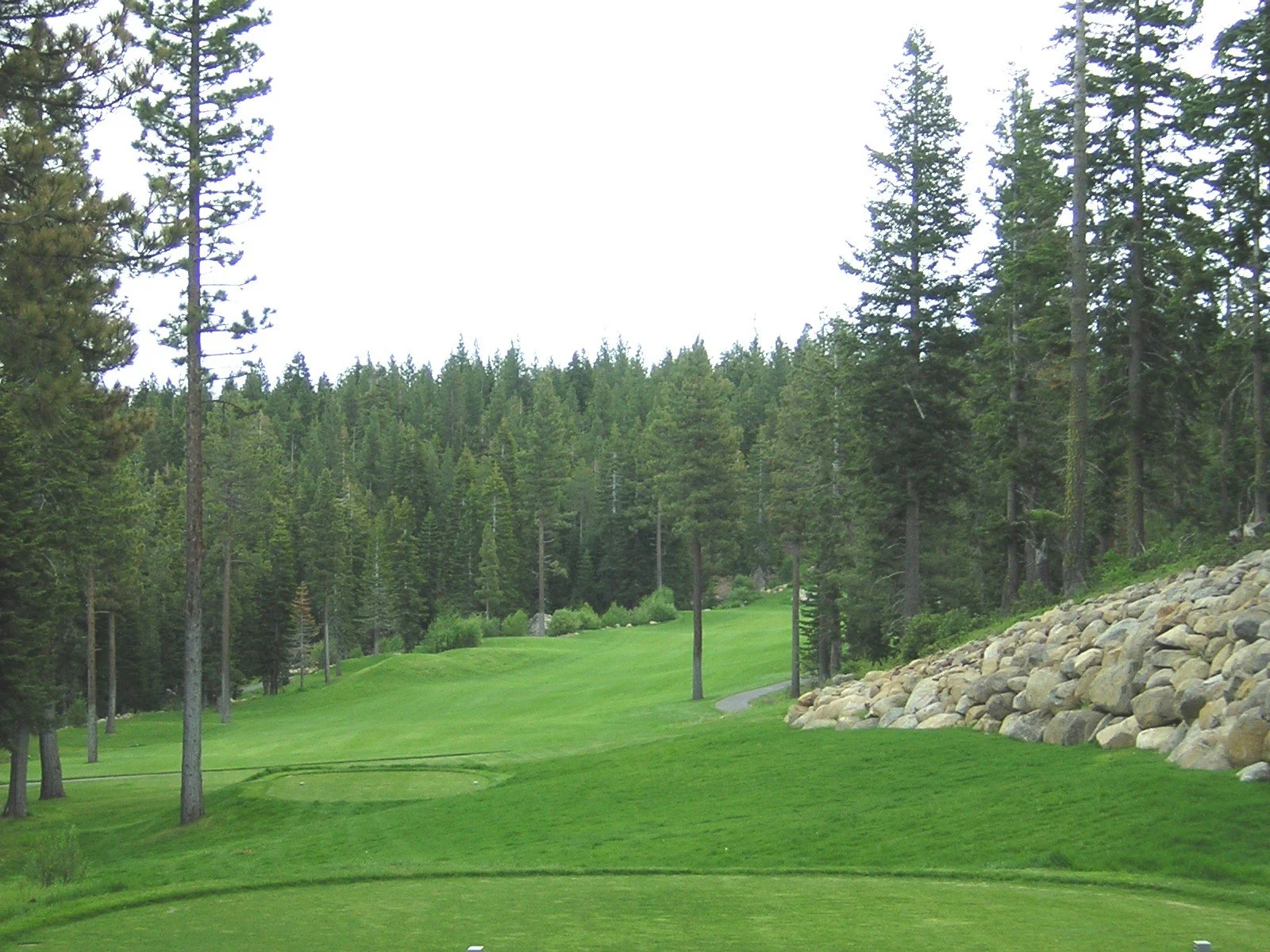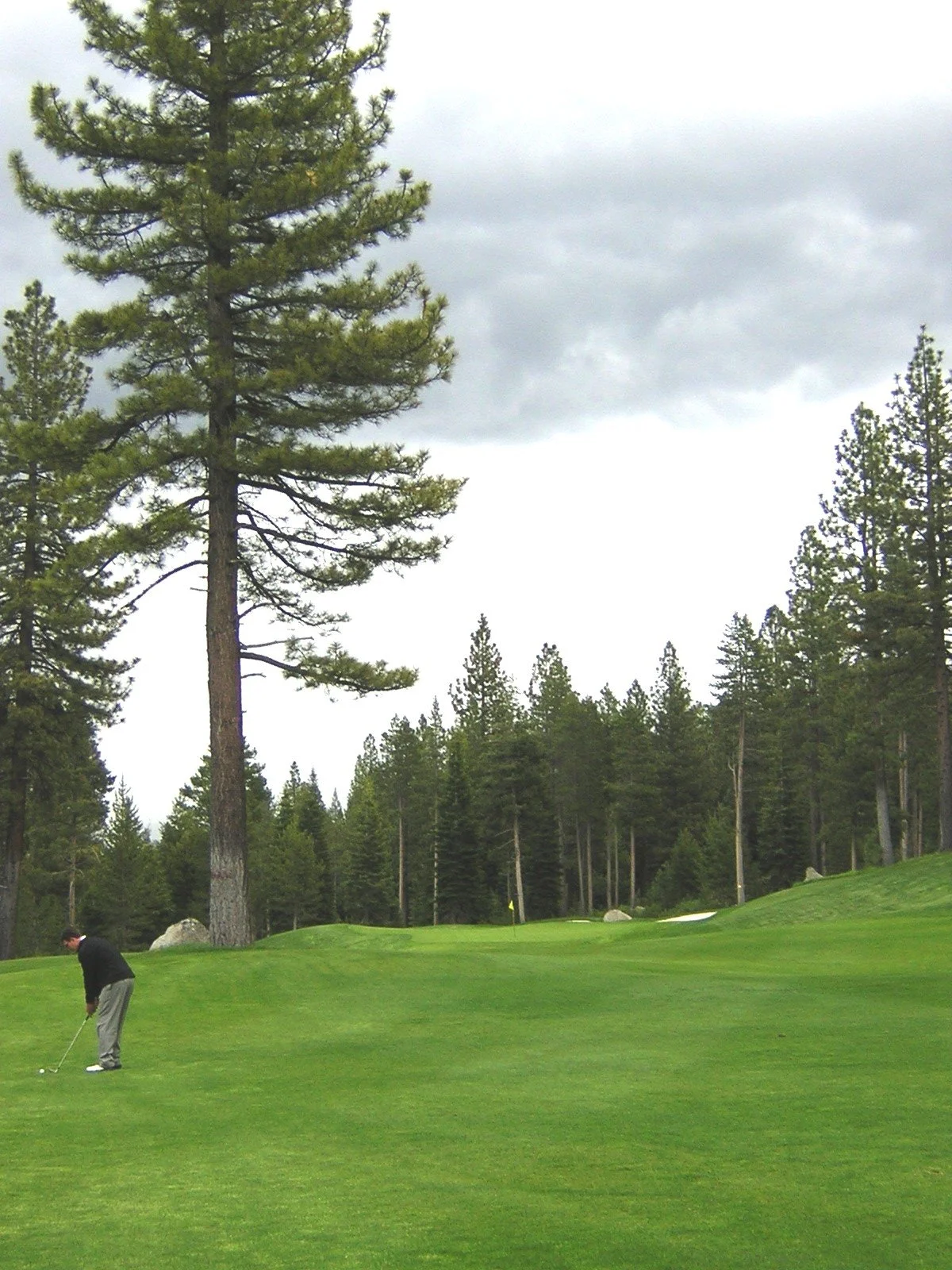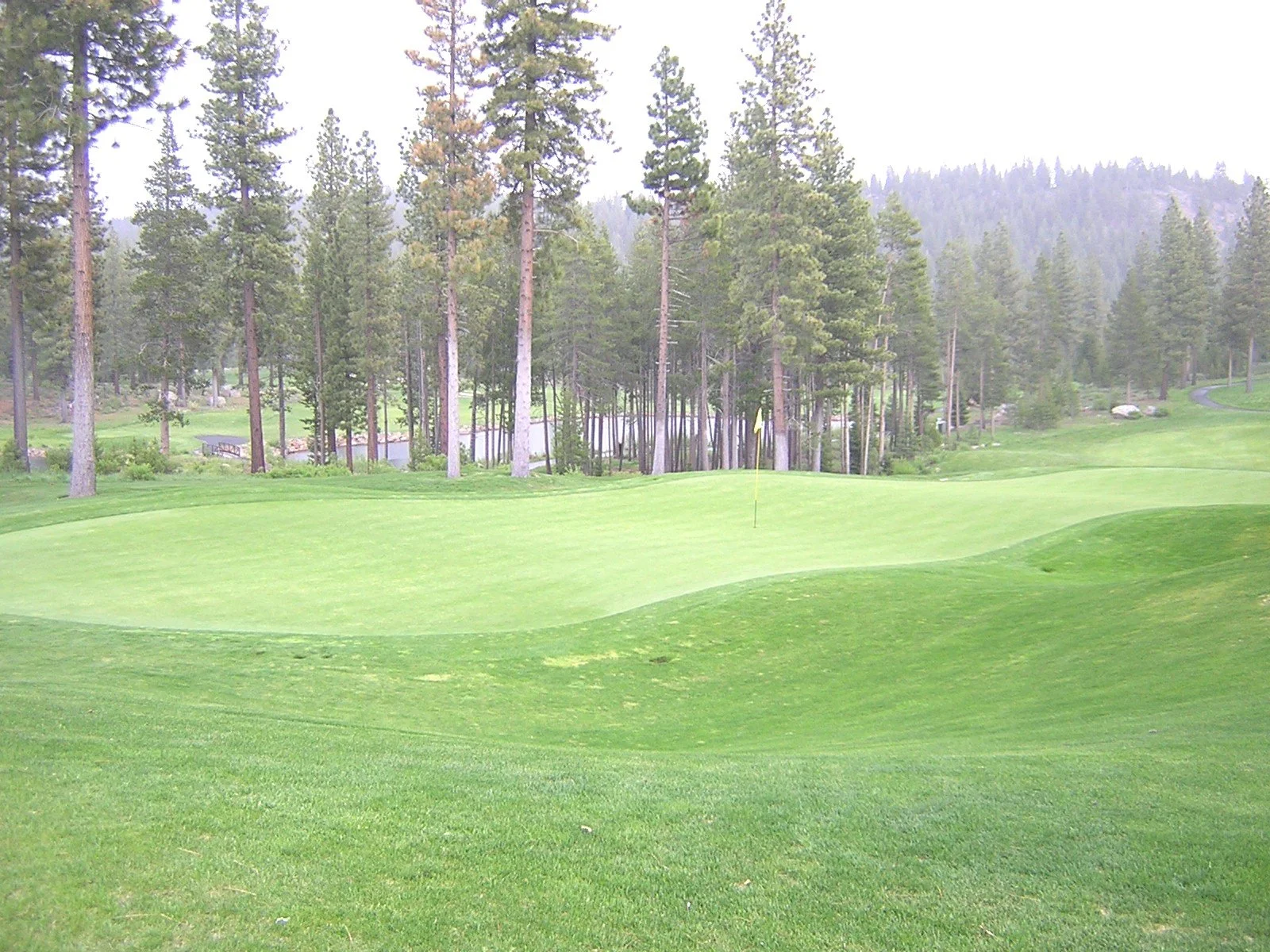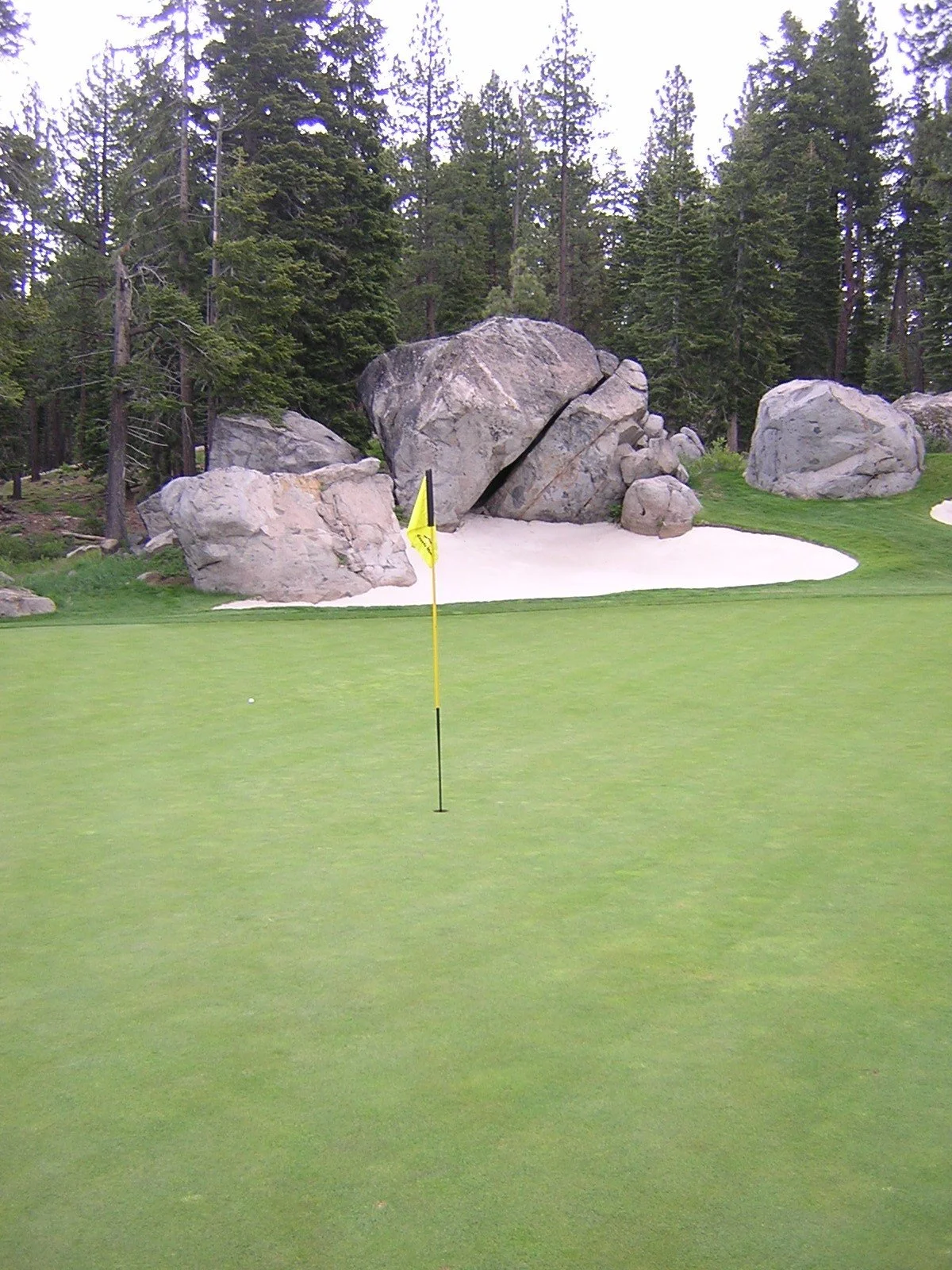COYOTE MOON GOLF COURSE
Course Architect: Brad Bell (1999)
Year Opened: July, 2000
Location: Truckee, California
Slope: 136. Rating: 73.7
Par: 72
Yardage: 7,177
Hole-by-Hole: 1 - Par 5 561 Yds 10 - Par 4 433 Yds
2 - Par 4 447 Yds 11 - Par 4 468 Yds
3 - Par 3 207 Yds 12 - Par 5 519 Yds
4 - Par 4 441 Yds 13 - Par 3 227 Yds
5 - Par 4 404 Yds 14 - Par 4 314 Yds
6 - Par 4 396 Yds 15 - Par 5 601 Yds
7 - Par 5 527 Yds 16 - Par 3 212 Yds
8 - Par 3 173 Yds 17 - Par 4 472 Yds
9 - Par 4 434 Yds 18 - Par 4 341 Yds
Par 36 3,590 Yds Par 36 3,587 Yds
Awards Won: 4 1/2 stars by Golf Digest - Best Places to Play (2009),
Ranked #12 Best State-by-State (CA) - Golfweek Magazine (2007-09),
Ranked #25 Best Courses Near You (CA) - Golf Magazine (2008),
Best Golf Course in North Lake Tahoe by Sierra Sun (2002-09),
Zagat Survey America Top Courses-second highest in CA (2006-07),
Ranked #14 Best State-by-State (CA) - Golfweek Magazine (2006),
Top-50 golf courses for Western U.S. - Fairway & Greens (2006),
Ranked #11 in California - Golfweek Magazine (2005),
Ranked #13 Best Course on West Coast - Fairway & Greens (2004).
Website: www.coyotemoongolf.com.
HISTORY: Back in 1995, course architect Homer Flint was carved out a routing plan for a new golf course in the Truckee, California area. Flint, who was part of designing over 50 layouts in the western United States - most notably Mauna Kea and Kapalua in Hawaii, Spyglass (CA) and the Phoenician (AZ) - worked for the legendary Robert Trent Jones, Sr. 50 years ago, and enjoyed
integrating the environment into challenging layouts, such as what he had accomplished at Plumas Pines Golf Resort.
Former PGA Tour player Brad Bell, a local pro from Sacramento, was brought in to complete the project in 1999. Bell had played a couple of years on the European Tour before gaining his PGA Tour card, but lasted only a couple of seasons earning just over $39,000. With his confidence low and hampered by a wrist injury, Bell made a lifestyle change. He certainly has made the transition to course architect a smooth one, as he transformed Coyote Moon into a delightful and stunning layout.
Originally called Truckee Falls during its construction, the name Coyote Moon stuck, most likely due to the coyote population on the course and the altitude of the course. The "Moon" stands 6,300 above sea level, with wonderful views of the Sierra Mountains.
Located on 250 acres, there are no homes on the property, with not a single plot sanctioned for development. This is a design that's as natural as Robert Redford in the movie. It fits perfectly among the wildlife, rolling hills and majestic pines.
No surprise that Coyote Moon has been receiving accolades since opening in 2000, including a 4 1/2 star rating by Golf Digest in 2009 and a continued high mark in 2025. Believe me, this course will continue to move up in the rankings.
COURSE REVIEW: When a course ranges from 5,000 to almost 7,200 yards, it's imperative that you choose the right markers to play from. This will be quite evident on the first tee at Coyote Moon. At 561 yards and uphill from tee to green, you better pick the correct buttons or you'll be in for a long, long day.
Tree-lined from tee to green, it's a must to split the fairway and even then you might have issues. You see, a tall Ponderosa pine and large boulder stand guard on the right side of the landing area. A pair of traps down the right side of the layup area should be avoided, as this will set up a short wedge to
the elevated green. The fairway tilts from left to right, so a flat lie is usually out of the question. At 38 paces, the opening green is the second longest on the outward nine, so check your pin position and don't forget to figure in the elevation change and the two-tiered putting surface.
The first of seven par fours over 400 yards long, the second is a straightaway, 447-yarder, where your tee ball must favor the left-center of the fairway, avoiding the tall pine on the right. The putting surface is just 28 yards long, so you'll have to be spot on with your approach.
Carved out in the middle of the pines, is the par-three third. Slightly downhill from the tee, a medium- to long-iron should suffice to a roller coaster green with a seldom-used bunker on the left. A back-right pin could be tough to get at with mounds short and deep. How tough could it be, I made par!
The next four holes will favor the right to left player. First up is the No. 1 handicap hole on the course, the fourth. From an elevated tee, you'll need to draw your ball down the left side, as the fairway repels all shots to the right. Your second shot will be uphill to the green, that is very wide, but extremely narrow. At 21 paces, it's the smallest putting surface at Coyote Moon. Remember to take an extra stick to reach the promised land.
Number five is the sharpest of the doglegs and must be played with this in mind, as any shot trying to cut the corner will be lost, unless of course you're playing with head golf professional, Ed McGargill, who can blast it across the trees. Most mortals should favor the right side of the fairway,
leaving a medium- to short-iron to a slightly elevated green. The putting surface is large, so take into account the pin position.
The sixth is just shy of 400 yards, as it bends to the left. The key to this par four is the tee shot, which must get past the corner of the dogleg, otherwise, the player will be blocked out by two pesky pines. Although relatively short, the tee ball plays uphill to the sloping fairway. Your approach shot will be with a short iron to a very attractive green, however, be aware, that the shot plays shorter than you think and missing long and or left is a recipe for double-bogey.
Par five's generally allow the player to gain a stroke back from early disappointments, and the seventh is no exception. Just 527 yards from the black tees, this par five can be reached in two, but it's the tee shot that's key. From the blue markers, it's 305 yards to the end of the fairway, so no
problem in that regard, but you must steer clear of the bunker right and the trees on either side. This will leave an uphill second to a narrow fairway and a tightly protected green. It's certainly worth the risk, as birdie will make the memorable view of the Sierra mountains even more special.
At 173 yards, the eighth is the shortest hole on the course, but definitely not the easiest. A mid-iron is the club choice, however a back-right flag can add 15-20 yards to your approach. The two-tiered putting surface wraps around a pot bunker to make matters worse. Sloping from back to front, try and stay below the hole for your best chance at saving par.
The closing hole on the front nine can be had, but you'll need a successful tee shot. Bending back to the right, the ninth features a wide landing area, devoid of sand. Trees guard the perimeter and the hole stretches downhill from the crest of the fairway. Although you'll have an awkward lie, you should have just a short iron to a severely sloped green. Avoid the bunker right and stay below the hole and you can make par. Oh, if I only listened to my own advice.
Number 10 opens the backside with a downhill, dogleg right par four of 433 yards. Favor the right side, as the fairway tilts to the left. A quality tee ball will leave just a short iron to a well-guarded and very deep green. Bunkers left, right and deep protect a severely sloped putting surface. A
back-right flag is the trickiest, so do not pin seek if you want to make par.
From an elevated tee, the 11th is one of the longest par fours on the course, but does not play as long as the yardage indicates. You'll need to move the ball from the left, as the hole bends hard to the right. The view from the tee is stupendous, with the mountainous region in full sight. With such a huge drop, you'll be left with just a short iron to a very accessible green. Sloping from back to front, stay below the hole and a birdie can be marked on your card.
One of the many signature holes at Coyote Moon, the 12th is certainly a player favorite. First of all, it's the shortest par five on the course, so birdies abound and secondly, it's beautiful. The tee box sits well above the fairway, so you'll gain a few extra yards at the onset, but make sure you play down the
right, as the fairway kicks to the left. Doglegging to the right, your second shot will play uphill towards the small, back-to-front sloping green. Sand lurks short and deep, so if you can't get home in two, lay up short and clip a wedge to birdie range.
On the way to the 13th, make sure you keep an eye out for the family of foxes living in the rocks to the left of the path. If you go slow enough, you'll see them darting in and out of the boulders.
If you thought 12 was a great hole, wait till you reach the downhill, majestic par-three 13th. Depending upon the elements, this 227 yarder can be reached with a eight-iron or a hybrid. Your tee shot, which travels 200-feet downward, must carry the ravine and Trout Creek to reach the longest green on the course at 42 paces. A ridge across the center of the putting surface, reaches out and
touches a bunker on either side. With a back-right pin and the wind in your face, look out!
Although rated as the easiest hole on the course, the 14th is anything but easy. The narrow landing area requires a pinpoint long iron or fairway metal, otherwise, trees and a slope on the right and a ravine on the left with certainly gobble your ball. The tee box from the back markers, sits awkwardly
to the fairway, making it even more difficult. Your approach to the green is slightly uphill and often misjudged. The putting surface is quite wide, but very thin, so an accurate second is key. The six I made certainly didn't help my score.
You won't reach the par-five 15th in two, I can guarantee that, especially from the tips. At 601 yards, it's the longest hole on the course and it doglegs to the right. Even with a huge tee shot, you'll need over 200 yards just to clear the ravine that splits the fairway at the 150-yard mark. The best play, is short of the trouble, leaving an uphill third to a two-tiered green that slopes hard to the front. Write me if you make birdie!
The final par three on the course is the third one-shotter over 200 yards. Not only does the prevailing winds come into play, but the pond and rocks fronting the putting surface will certainly test your will, not to mention courage. Fixed in an amphitheater setting, the green is as undulating as it gets. Another back-right pin will bring a deep bunker into play.
Number 17 is not only the second-hardest hole on the course, it's also the longest par four at Coyote Moon. Even though it plays downhill and to the right off the tee, it's still lengthy at 472 yards. Your tee shot must carry a water hazard over 250 yards from the tips to reach the fairway. Favoring the
right side to avoid a tall pine, you should be left with a mid-iron to another long, but narrow putting surface. Although shots will repel left towards the green, the putting surface slopes hard from back to front. You'll have to rely on your short game to save par.
Playing back up the hill towards the clubhouse, the closing hole is a mere 341 yards. Fairway metal or long iron should suffice to an ample fairway, but it's the second shot that is the key to defeating par. The green is perched well above the fairway and is the longest on the course at 48 yards. The putting surface is three-tiered and guarded by sand and grass hollows. You'll need to add two to three clubs with a back pin. Come up short and you'll be lucky to three-putt. A wonderful finishing hole to a beautiful course.
FINAL WORD: Golf courses nowadays are generally built around housing developments, spoiling the splendor of many a tract. So it was a welcomed relief to find that Coyote Moon was sans homes and home sites, just golf and sensational scenery at its best.
You'll be stunned by the wonderful vistas throughout the course, from the first tee, as you stare at the Sierra Mountain range, to the heart-stopping, par-three 13th. But that's just part of the fascination of Coyote Moon.
The conditioning of the layout is unsurpassed in the region and the challenge of the "Moon" is as tough as any in the High Sierra with a slope of 138.
I hearken back to the wonderful design that incorporates native wildflowers, majestic Ponderosa pines and numerous rock formations, teaming with wildlife, into a course that seems to have been built years ago.
Two minor strikes against Coyote Moon, although there are chipping areas and practice bunkers, the lack of a driving range hurts and the slightly awkward ride from the sixth green to the seventh tee is a little odd, but that's being picky. Some might think the $205 price tag is a bit high, but there are
reduced fees for twilight, juniors, seniors and weekday play.
The bottom line is that Coyote Moon is one incredible mountain golf course and along with sister layout Old Greenwood, the duo is unmatched in the region.
With great stay-and-play packages tied together with Old Greenwood, the four different sets of tee markers, the beautiful ambience, wildlife and seclusion and the challenge of the intense layout, Coyote Moon gets high marks from me. Trust my advice when I tell you to "shoot the Moon."

